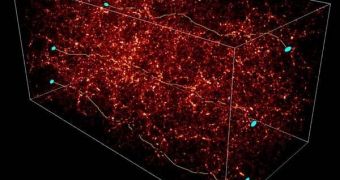Astronomers have realized since the beginning of the global financial crisis that a lot less money will enter their pockets for conducting scientific research. Some very important projects were abandoned, even though they held great promise, so, now, the community has to turn to innovation to keep funds coming in. It was under these circumstances that some realized the fact that searching for the elusive dark energy of the Universe, and looking for distant exoplanets capable of harboring life, implied roughly the same type of equipment, in spite of the widely different objectives, Space reports.
One of the best methods of looking for dark energy, for example, is using an observation technique known as microlensing. This technology, for all its precision and potency, is roughly the same as the one employed in observatories, whose goal is to detect the elusive dark energy, a force that is believed to be driving the universal expansion. Very little is known about it, but, if researchers are true in their models, predictions and calculations, then the stuff could be the most important force out there.
In short, astronomers view dark energy as the engine that forces galaxies to expand outwards from the original point of the Big Bang, the event that saw our Cosmos explode into being after the collision of elementary particles. Dark energy is also responsible for the accelerated expansion that astronomers observe on the interactions of galaxies, an event that can have no other explanation. Additionally, studying the stuff becomes important after reading a single theory, that of the Big Rip. In essence, it says that the energy may eventually begin to pull so hard on matter, that it will break galaxies, solar systems, planets, and, later on, atoms and nuclei.
“Both dark energy and microlensing planet studies are best done with a wide-field telescope optimized for infrared observing,” University of Notre Dame cosmologist Peter Garnavich reveals. European experts have already proposed the joint Euclid mission, which is scheduled to carry instruments fitted for both types of observations, but its faith is uncertain. Experts hope that its benefits, including the possibility of immediate scientific return, may persuade officials to invest in it. “There is less money for research, so it is important to have robust, low-risk missions that maximize the scientific return,” Institut d'Astrophysique de Paris (IAP) Euclid team member Jean-Philippe Beaulieu explains.

 14 DAY TRIAL //
14 DAY TRIAL //